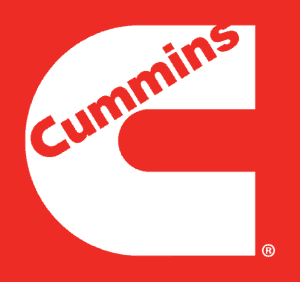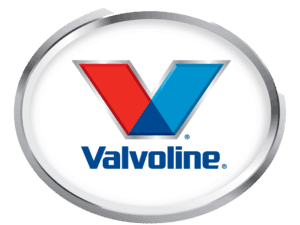What Does A “SERVICE” Involve? The American RV motorhome comes under the category of a specialised vehicle and requires specialised in depth knowledge with a good understanding of where to look and find potential problems, these could be hidden behind floor panels and cupboards.
When you own an American RV motorhome you soon find out that they are not all fuel efficient. To travel a fair distance you need to have the vehicle servicing, the tendency is to find a nice friendly truck, bus or car garage to do the service. They will tell you that they can service your vehicle for you so why travel 50 – 100 miles to a specialised workshop when they can do the work for you?
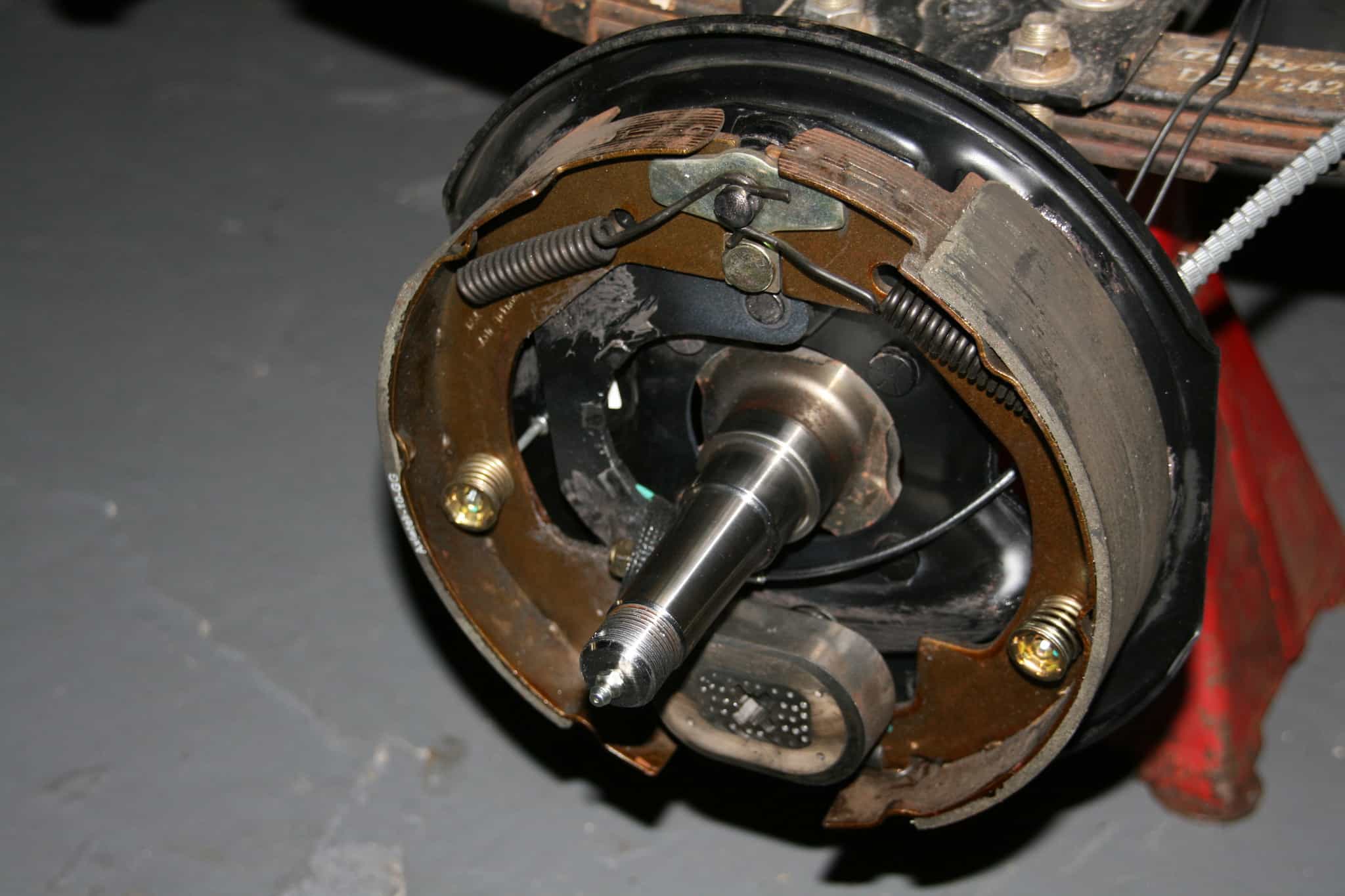
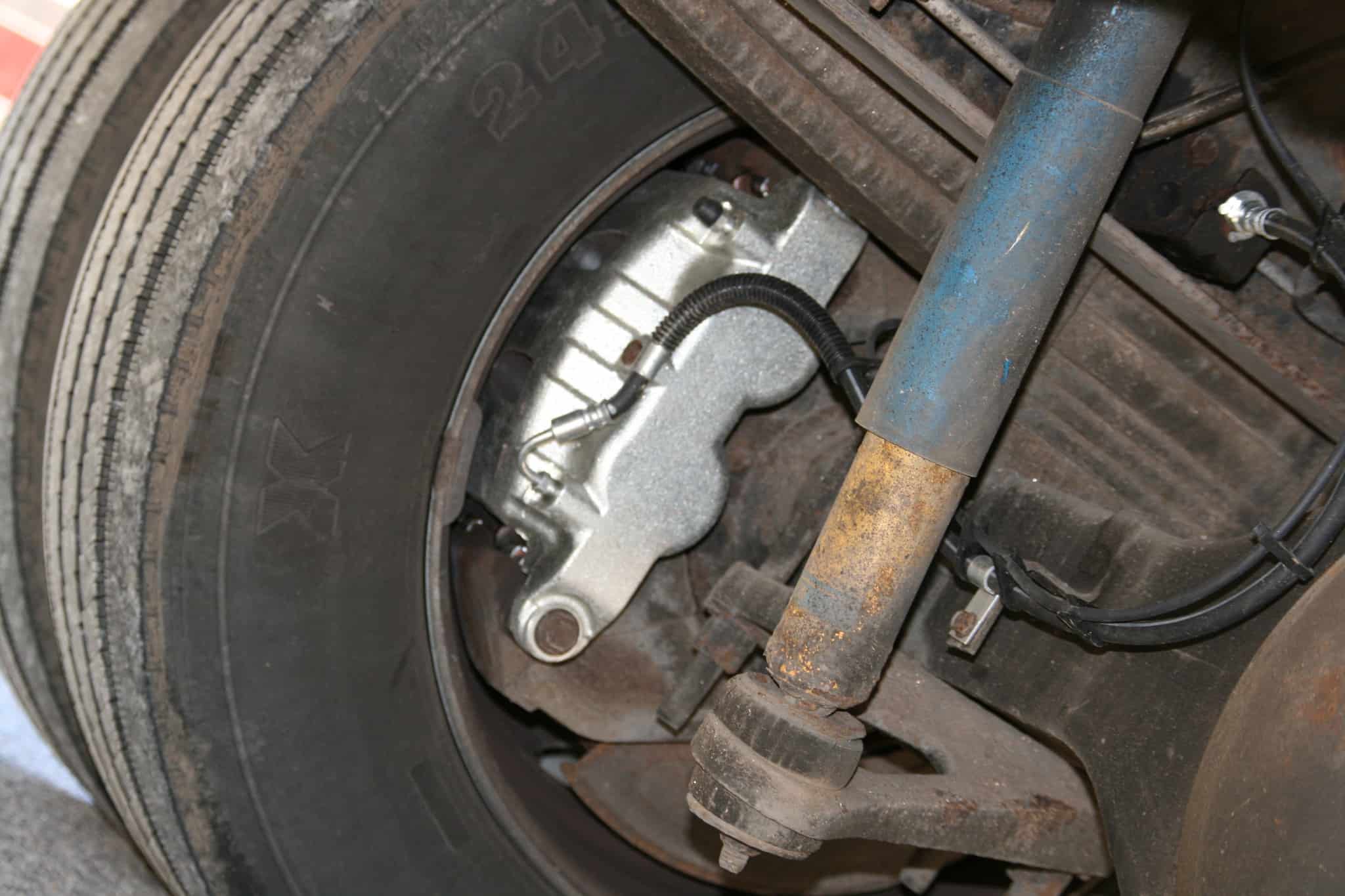
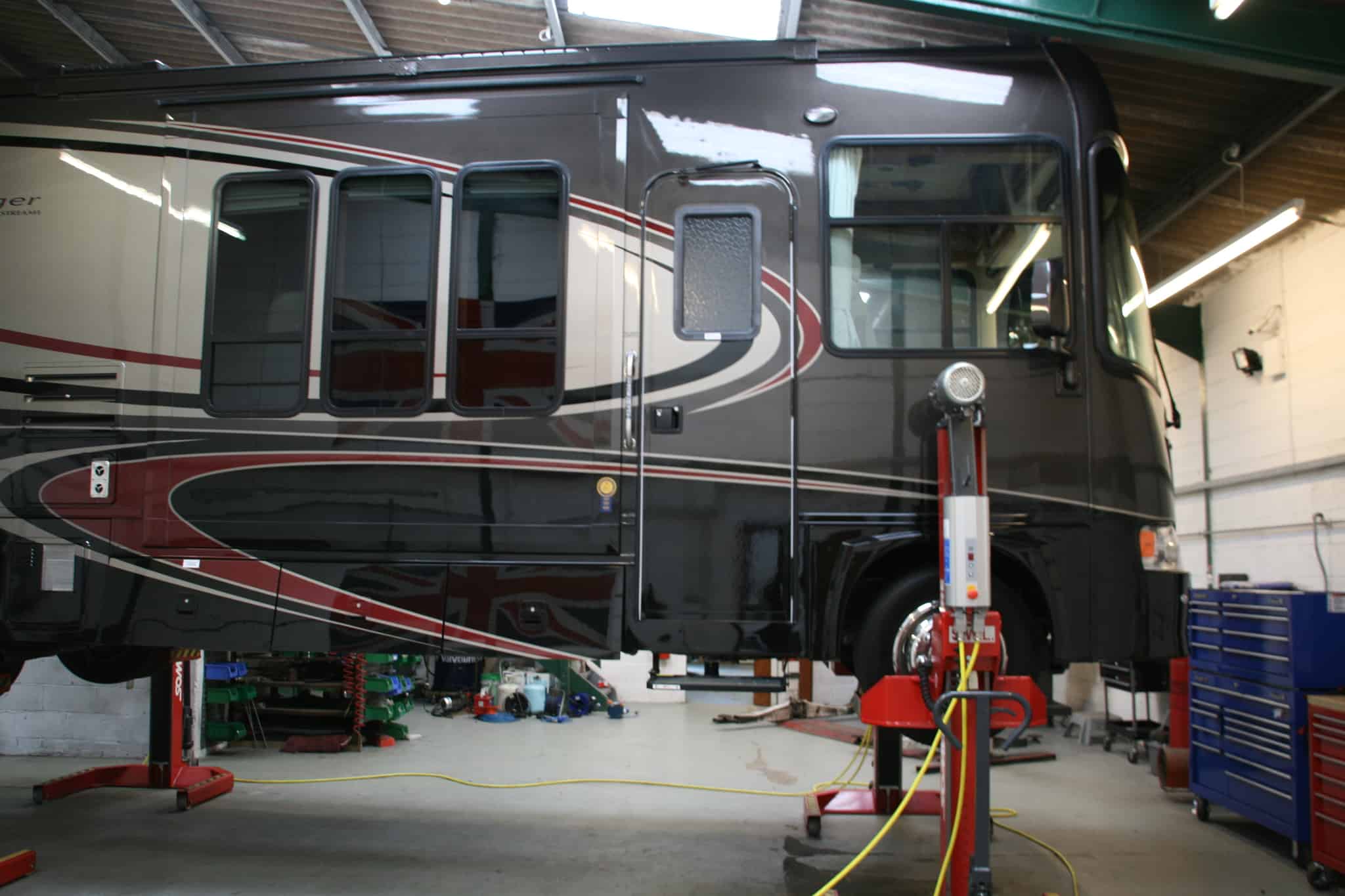
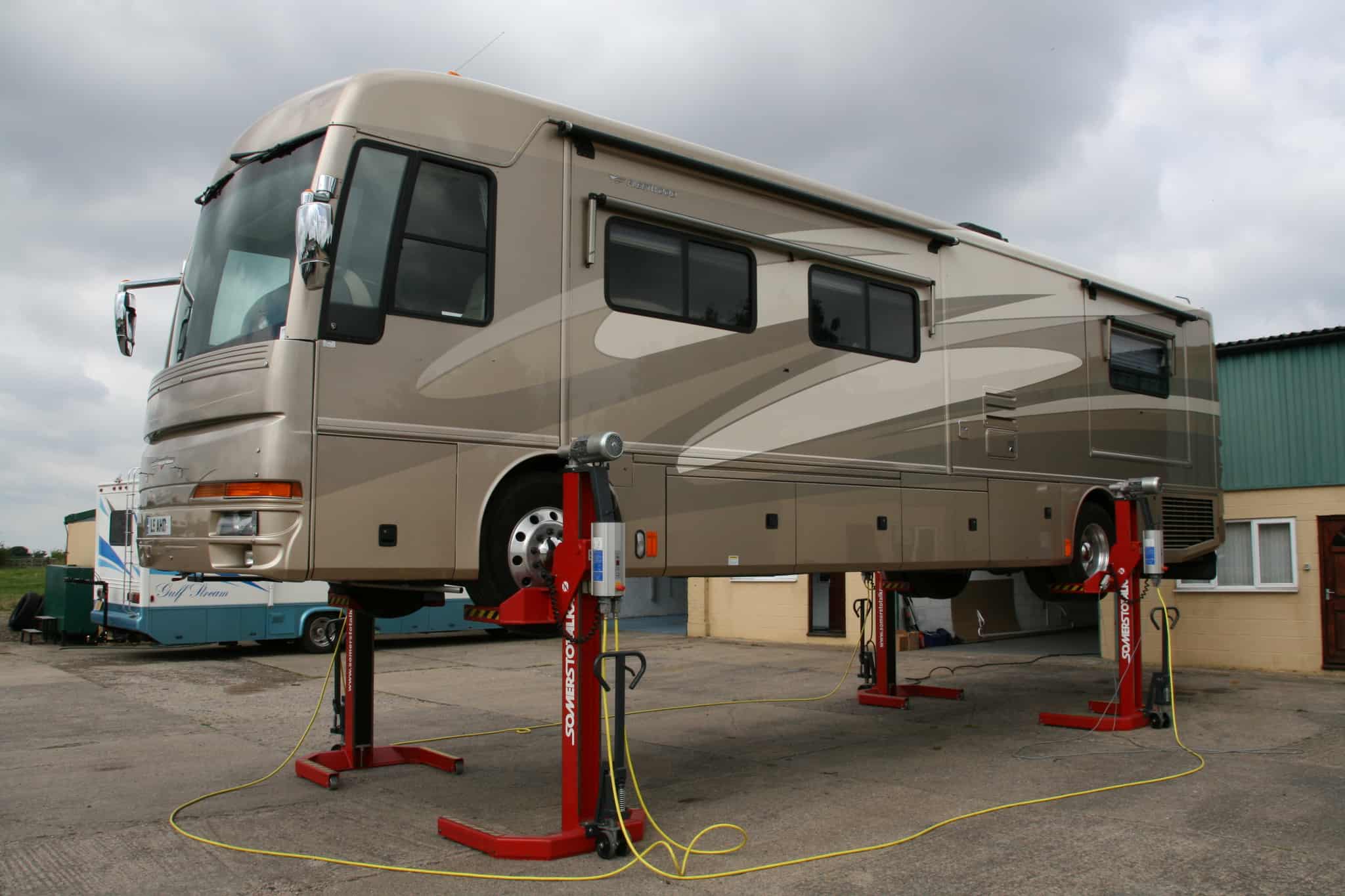
Hopefully when you read this case study that I have written you will have an idea of what is involved. With the LAS service you are able make your own assessments of what work is to be carried out, as well as what value for money you can and cannot get.
The LAS service sheet was designed by myself, it covers all and more potential problems as well as including additional preventative maintenance.
When you are planning a European adventure the last thing you need is to break down at the side of the road waiting hours for someone to run up with no in depth knowledge of an American RV motorhome.
If you decide to become an LAS customer, then you can rest assured that if something untoward did happen we would give you all the assistance that we possibly could.
The LAS service is designed to be carried out once a year and can be amended if the vehicle hasn’t covered great mileage, for example the diesel filters nay not need to be changed.

We start firstly with a full vehicle inspection, inspecting all the MOT applicable items followed by many additional bits and pieces. Once the inspection is fully completed and the service sheet has been filled in showing any defects, you the customer will be informed of what has been found. One of the operations we include in the service is the removal of all the road wheels, this is so brakes can then be taken apart and the brake lining material can be examined closely for moisture damage. In the case of disc brake we will be looking for the brake material metal backing.
With the brake pads removed, the brake callipers, pistons and rubber dust covers can also be inspected. At this point you may be excused in thinking “This doesn’t apply to my American RV because it has only covered 16,000 miles or so).
Unfortunately this is also what a lot of our competitors think, this is why many of our new customers have been travelling around with their families relying on substandard brake material to bring them to a stop (Images below).
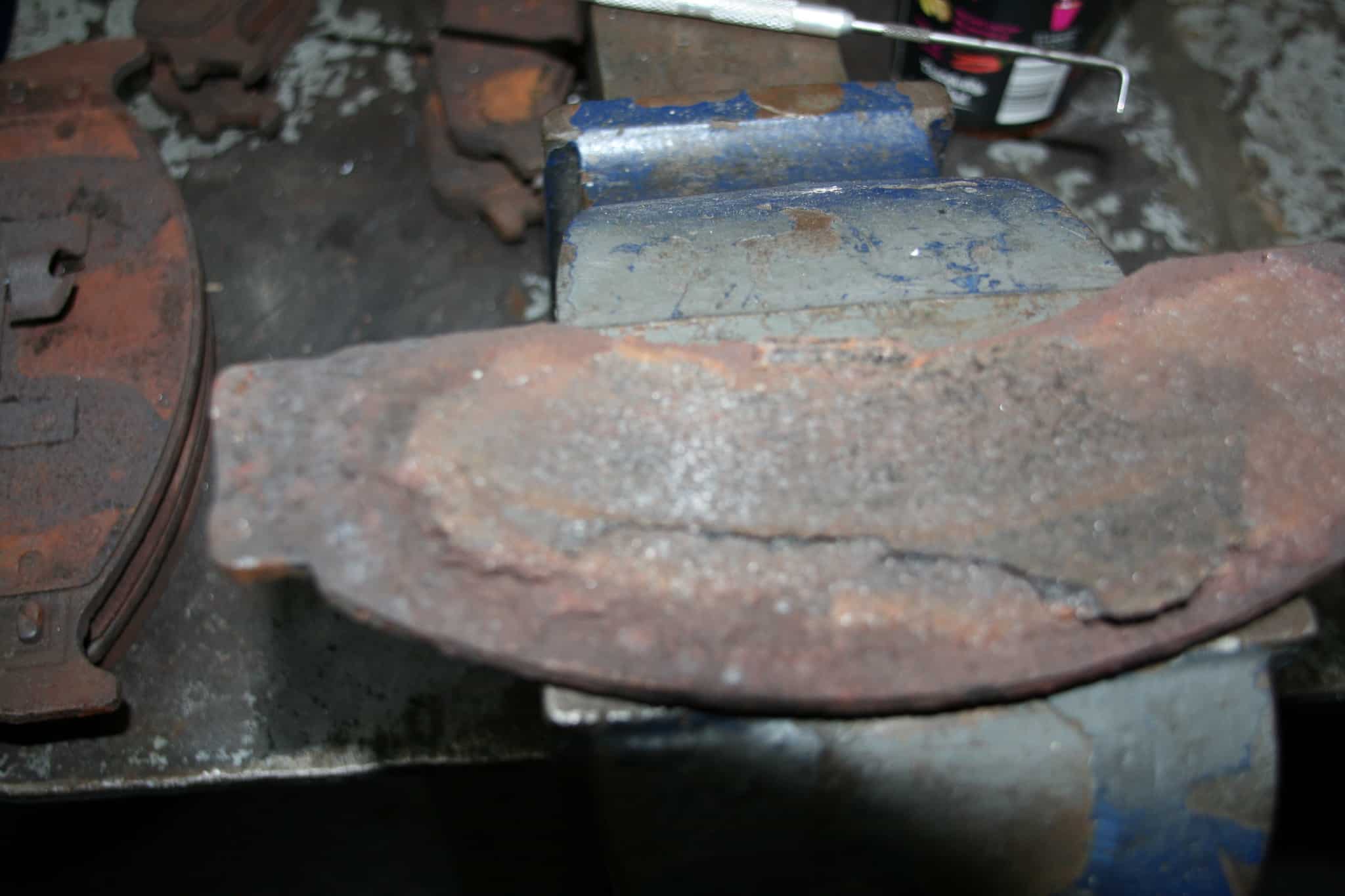
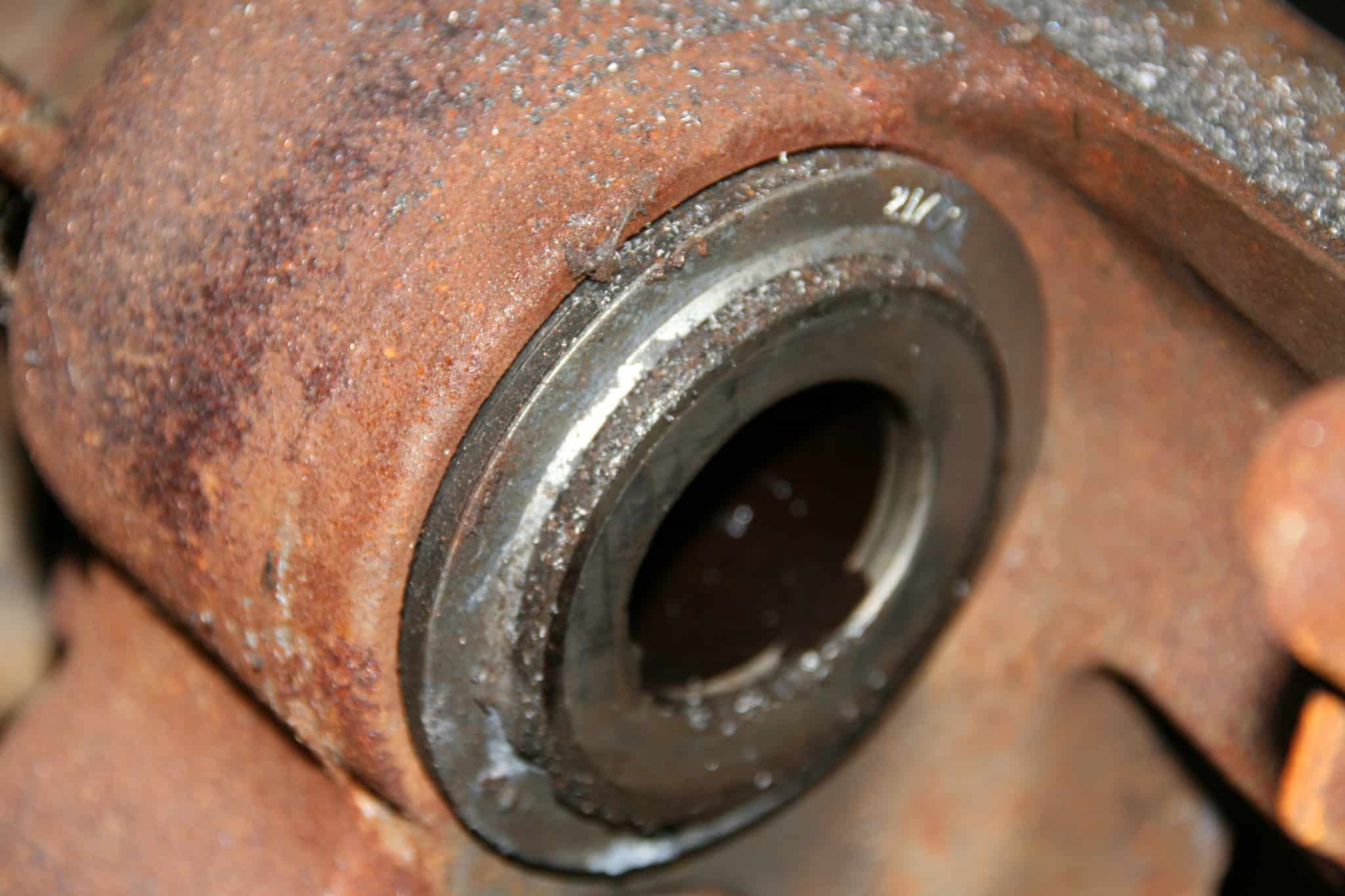

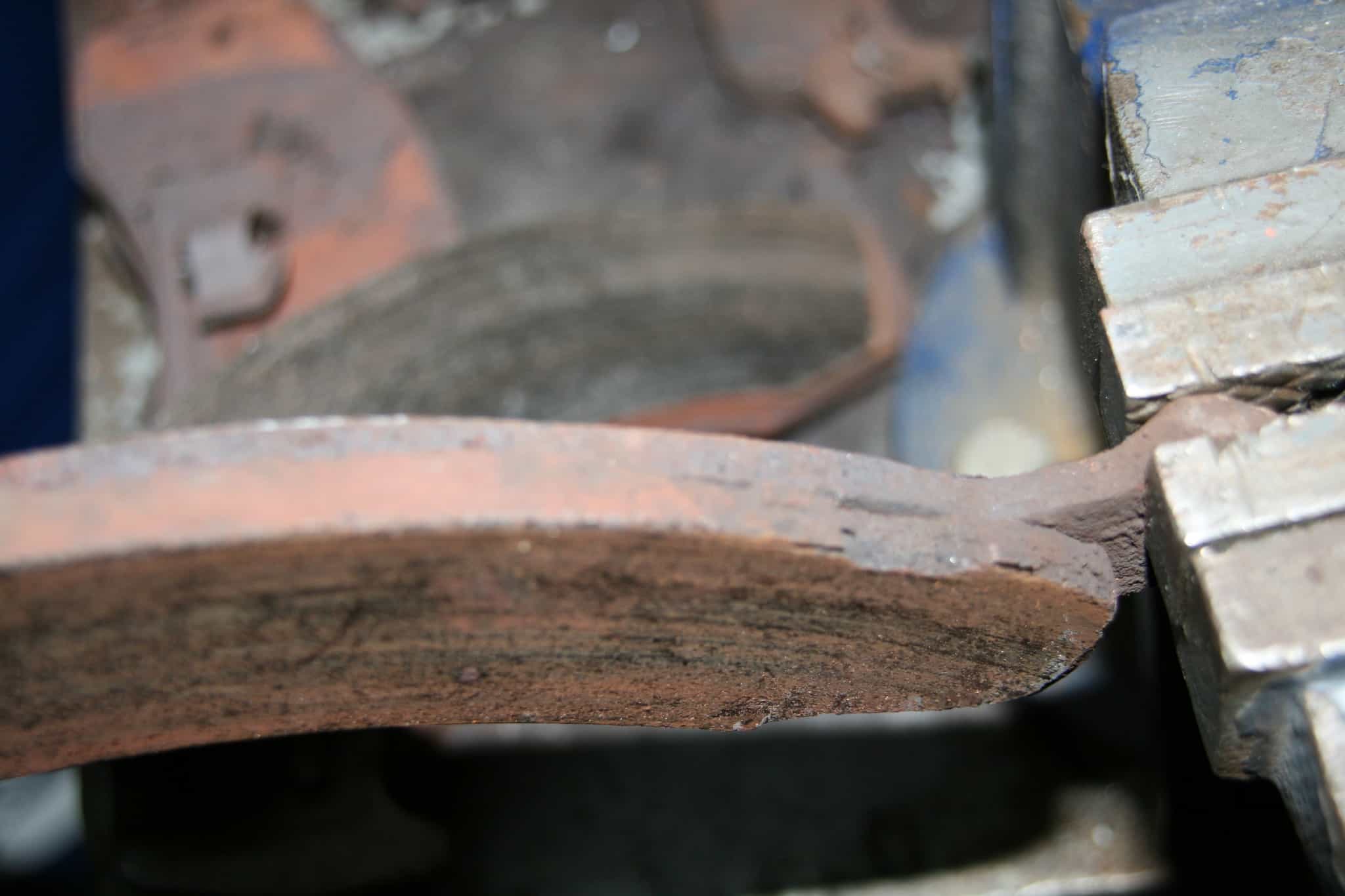
The next potential issue to be checked is the water content of the brake fluid. A sample is taken from the master cylinder, if this fails then another test sample is taken from the brake calliper which is furthest away from the brake master cylinder, if that sample fails then there could be a potential brake calliper problem.
Brake calliper pistons are made of a similar substance to Bakelite. The advantage of this material is that it is very efficient at not transferring heat from the brake pads to the brake fluid dramatically reducing the chances of brake fade, the disadvantage is that the material absorbs moisture. This problem is not an issue on vehicles that are constantly in use but for vehicles such as American RV motorhomes it can be a huge problem. When the calliper pistons absorb moisture from the brake fluid or the surrounding air they can become slightly oval in shape and are not perfectly round. If the calliper gets warm it can jam causing the brakes to overheat. When the brake fluid content is above 1% we will advise it to be replaced.
What Does A “SERVICE” Involve? Other clues to a potential brake problem can be detected on the initial inspection, a blue tinge colourisation to the brake disc can be seen. If you do have a brake issue and the brake pads need replacing, the brake discs will be machined to remove the decolourisation, this process vastly increases the brake efficiency of the brakes.

Damage Brake disc surface

Disc after machining
If you own one of the larger American RV motorhomes then the braking system could be operated by air and the vehicle could have drum brakes. In this case we will remove the brake drums to check the condition of the brake shoe material, then check to make sure the lining is not lifting away from the brake shoe. Often what happens with the drum brakes is the bottom shoe brake rivet fills with dust causing very poor and noisy brakes. This dust will then be removed from the rivets and the brake shoes and drum will be cleaned.


What Does A “SERVICE” Involve? Another item that is overlooked is the air dryer cartridge, (what is this you may ask)? If the motorhome has air brakes then it will need a constant air supply. The air supply comes from a compressor which is driven from the engine. When the air is compressed it gets hot as it passes to the storage tanks, it will cool leaving behind water vapour. If this water vapour gets into the air system in cold weather it will freeze. In order to stop the water vapour getting into the air tanks the hot air is passed through the air dryer that contains desiccant beads housed in a textile bag. With age the textile bag deteriorates allowing the desiccant balls to escape into the air system, this cause havoc.

Image of Air Dry Cartridge
The American RV motorhome regardless of its weight and size requires a class 4 MOT test once it is 3 years old. With the MOT becoming more involved each year due to legislation rules, we at LAS subscribe to the notification of the MOT inspection charges. The advantage of this is that we get approximately 6 month’s notice of VOSA intensions, allowing us to inspect your vehicle with the future in mind.
What Does A “SERVICE” Involve? One of the regulation changes that affects owners of American RV motorhomes is the ruling on ball joint dust covers, better known as grease boats. The class 4 MOT is exactly the same test procedure as your family car would undertake and this is where things start to get a bit complicated. If a fault is not an MOT requirement does that mean it should be ignored? Some people say yes as a way of saving money, but for me it is a big “NO”, safety comes first. Now back to the grease boats, the new rule states that the grease boats on any part of the steering and suspension cannot be torn or split. Most modern cars have sealed steering and suspension ball joints, whilst American RV motorhomes are re-greasable. If the ball joint is a non-greasable I can understand why this rule was brought in because water will enter the joint and cause corrosion, as well as very rapid wear and this could be dangerous. With a greasable joint the operation of re-greasing will force any water out of the joint. Not to worry, if you do have a damaged grease boat on a joint then we do stock a majority of grease boats and in most cases can be charged without any great cost.
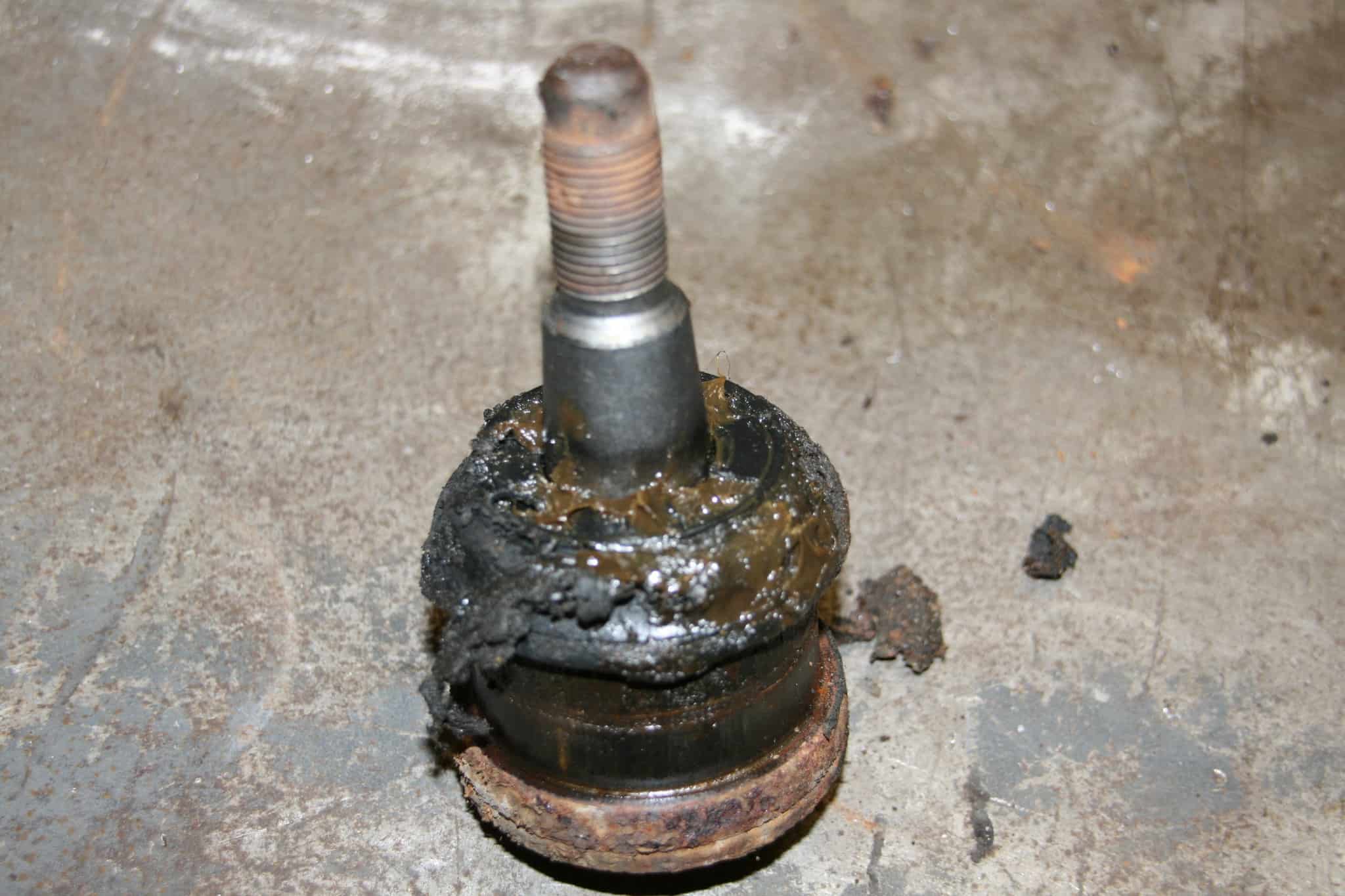
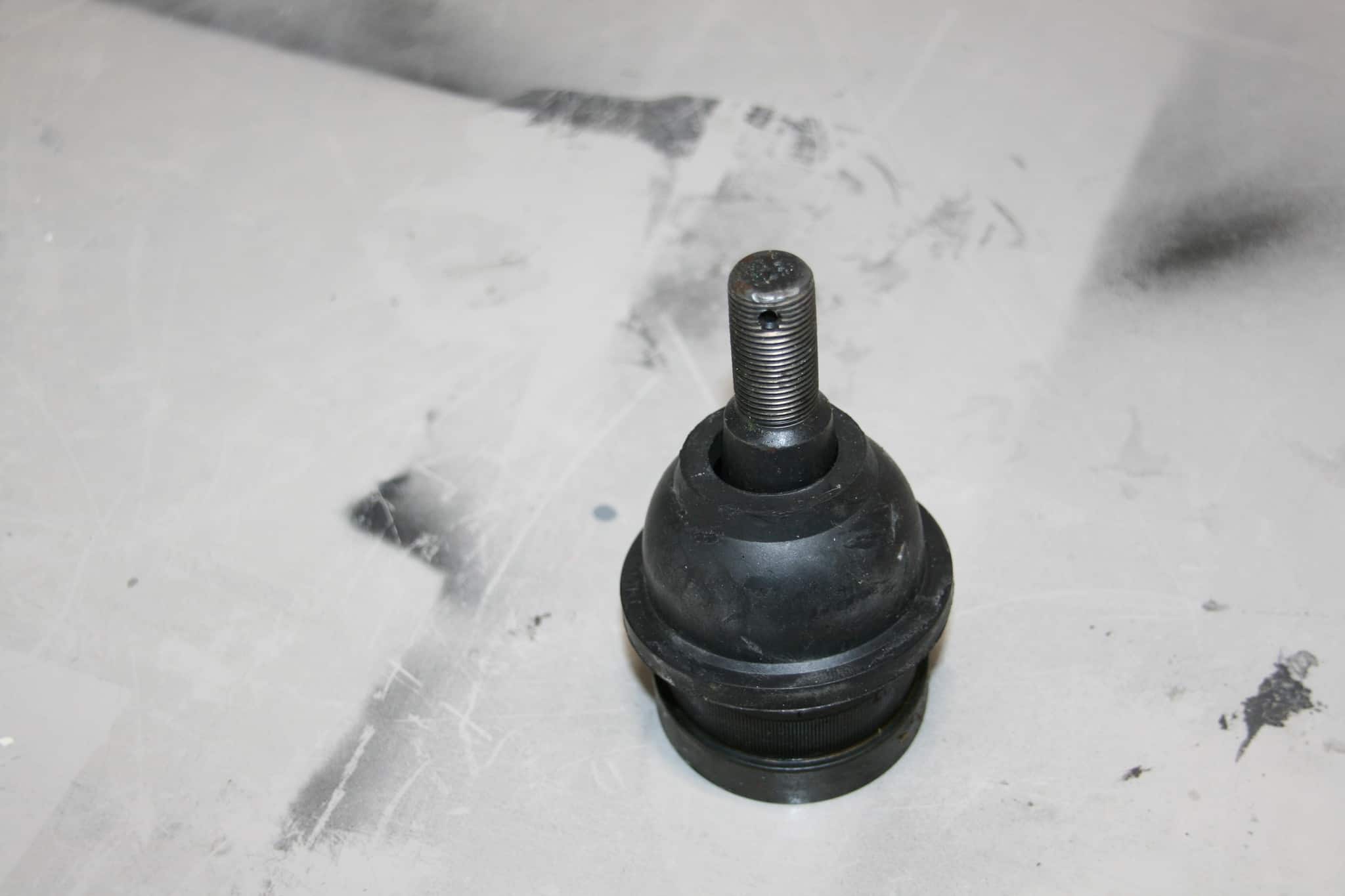
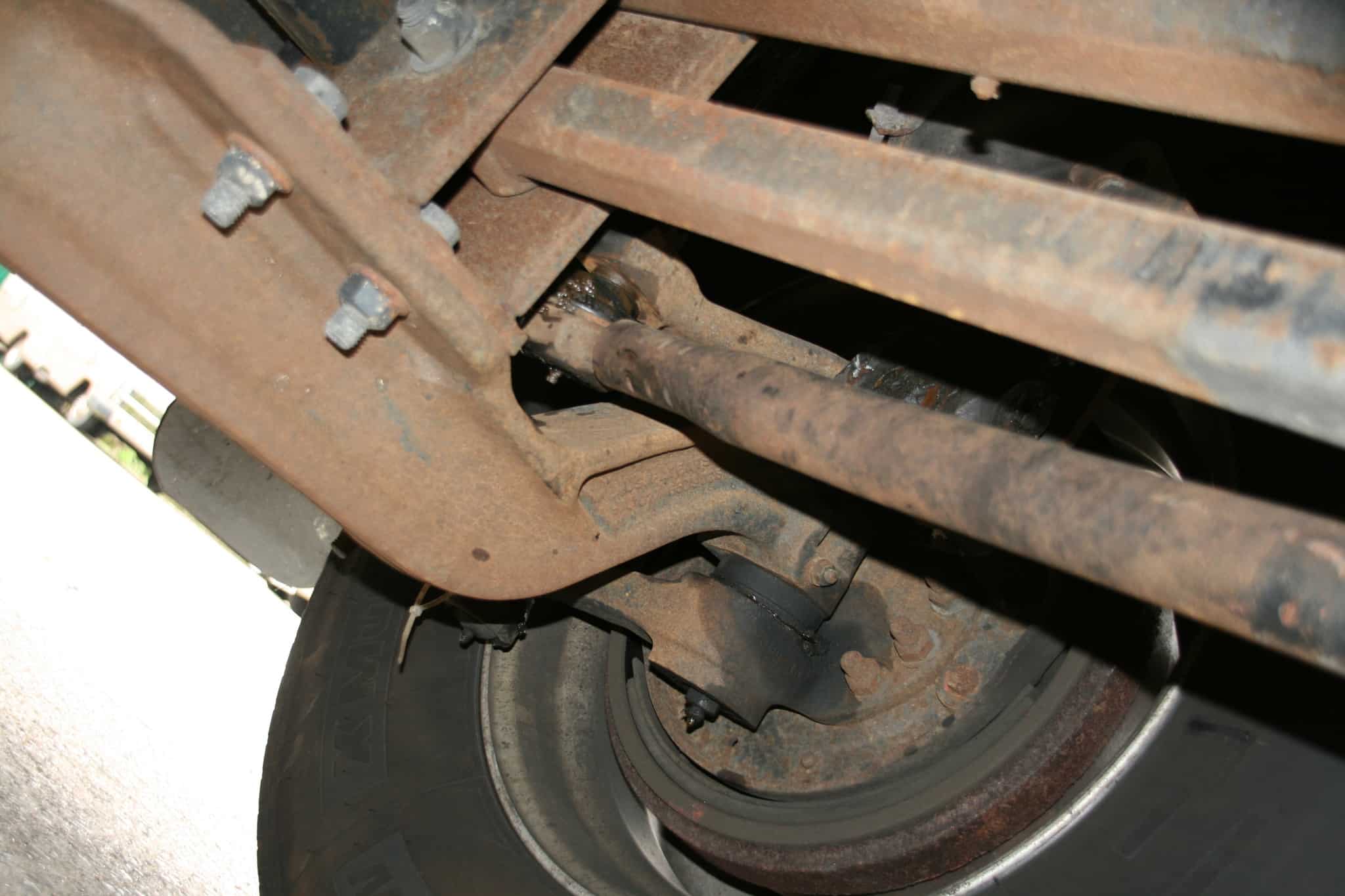
One vehicle that this new rule affects is the latter workhorse W32 chassis. These latter chassis have sealed bottom and top ball joints (no re-grease capability) which are prone to the rubber grease boat deterioration. Once the boat is holed in anyway the water ingress accelerates the wear rate dramatically, the only cause of action being replacement.
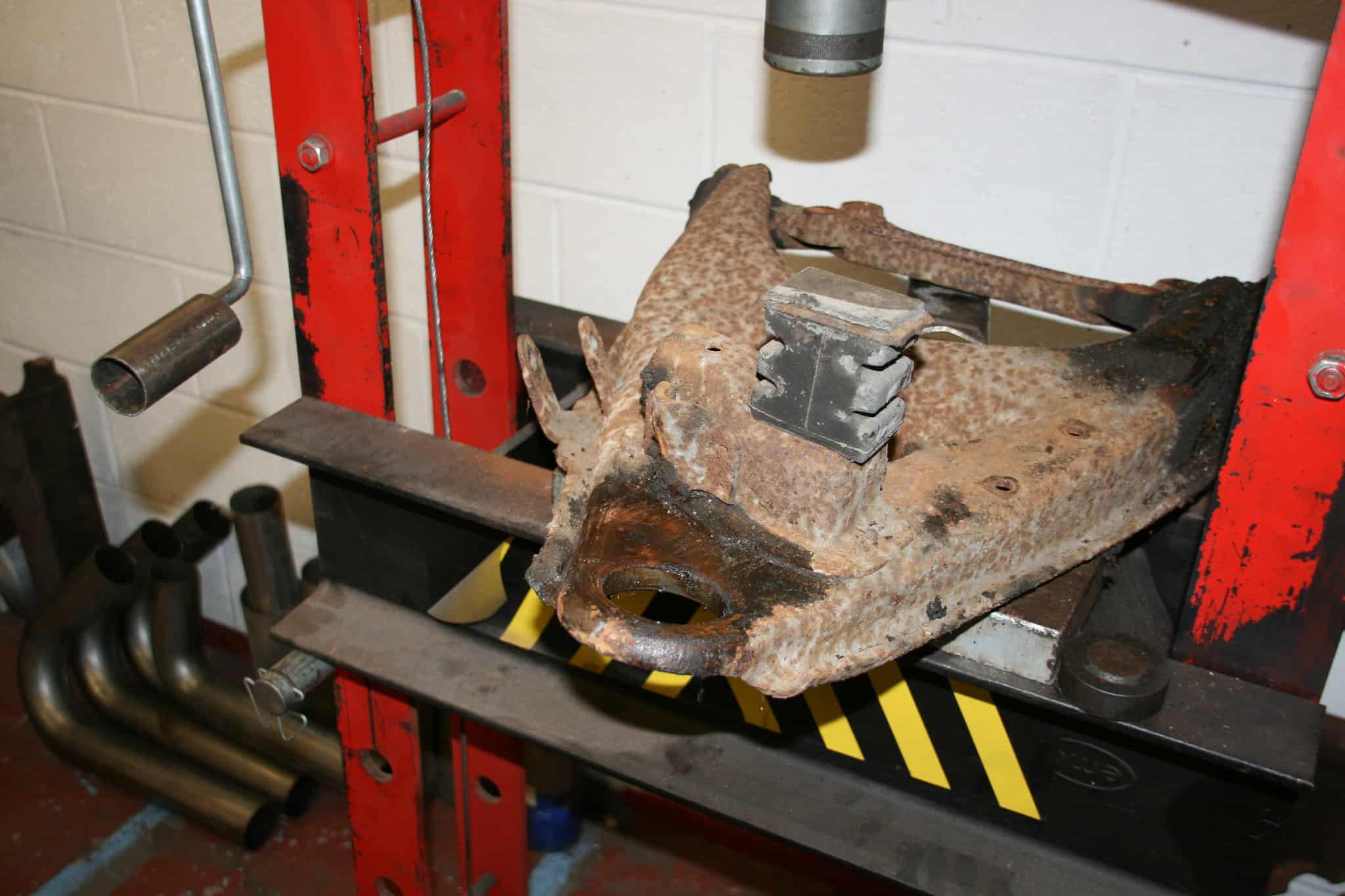
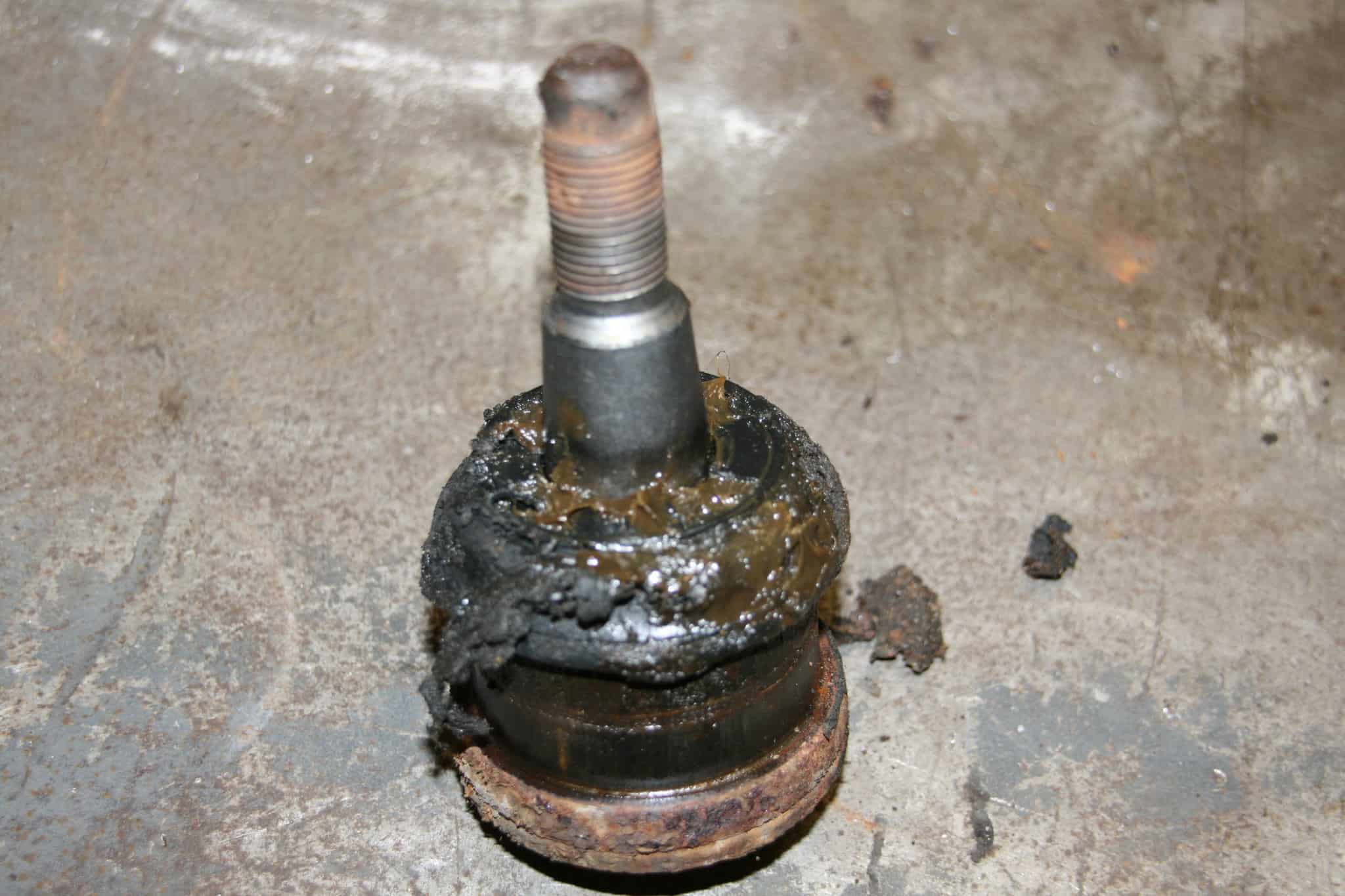
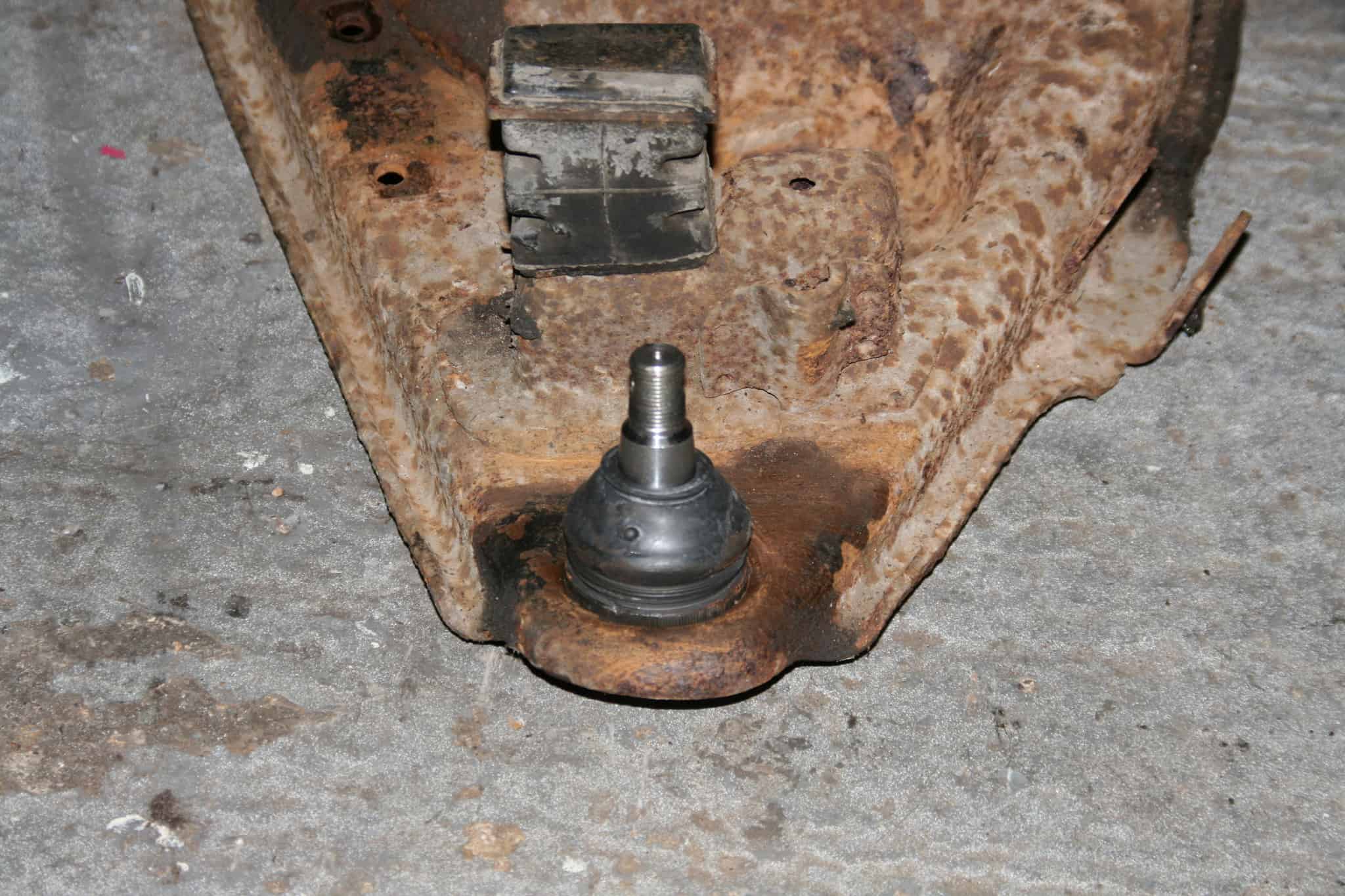
The LAS service sheet was written by me with the knowledge that I gained whilst working on fleets of trucks and buses from privately owned fleets, nationalised fleets and main dealer workshops.

What Does A “SERVICE” Involve? One advantage of removing the road wheels is it allows a more comprehensive inspection of the tyres. I think one of the most common problems is tyre “BLOW OUTS”. This is when the tyre splits and deflates in an instance, the reason for these failures is an age issue. If the RV motorhome stands for the majority of the time, ultra violet light dries out the rubber causing it to crack and split, a bit of good advice is to get a set of tyre covers and use them. Even though you do use tyre covers the manufacturers suggest replacing the tyres every six to eight years and that is why we write the tyre ages on the service sheet as well as noting what the tyre pressures were and what we set them at. At this point I will try to clear up a common misunderstanding about tyre pressures. First of all the recommended tyre pressures can usually be found on a plate attached to the left hand wall below the driver’s side window. These tyres relate to the tyre brand that were originally fitted to the vehicle when new. If the tyres are not original the data sheet could be incorrect.
As you can see from the data plate above the tyre age is 225/70/19.5 and the rear tyre pressures should be 90 PSI. The fact is that the tyres used would have been Michelin tyres and at that time (8-03 year of manufacture), the maximum pressure those tyres should run at is 90 PSI.

In this image of the tyre you can see some small figures, 3150kg is the maximum load that the tyre can carry single on the front, dual would be if the motorhome had duel tyres at the rear. The figures 900 KPA is the maximum tyre pressure 130lb/sq. in, so using this information you can set these tyre pressures, from the data sheet they would be incorrect. For this vehicle on the new tyre I would suggest tyre pressures of 100lb/sq. in for the front and depending on the weight of the vehicle I would say 110lb/sq. in for the rear tyres.
Now to check the age of the tyres, as I have mentioned tyre aging is a big issue. To check the dates you need to check the date numbers stamped on the side wall of the tyre.

In this example you can see 0417 stamped on the side wall, (please note that some manufacturer’s only mark one side wall of the tyre). The first number 04 relates to the week of manufacture, these numbers go from 01 to 52, as you have guessed the second two numbers represent the year of manufacture, roughly translating the tyre was manufactured at the end of January 2017. However if your tyre is only showing three numbers on the side wall, this shows the tyre was manufactured before the year 2000 and should have been replaced a long time ago.
What Does A “SERVICE” Involve? Unfortunately, some American RV motorhome technicians are have a go google technicians, they ask for advice, then watch a you-tube video of how it is done, then they are fully armed with a wealth of you-tube knowledge and loads of confidence to attempt the task. A good example of this we found just recently when carrying out a service on a motorhome was when the motorhome was plugged into a landline to allow us to test the roof air conditioning units and I started to smell burning. We followed the smell which then turned to smoke to find the cause.

Image of the transformer the burnt wiring

A better view of the damage
“What happened there?” you might ask.
Someone had already had a fault and thought they had repaired it not understanding what had caused the problem in the first place.
- The wire on the left marked “ov” is the neutral wire for the outgoing 110 volt circuit. On the first attempt of repair this was already damaged, the reason is that the cables diameter is not large enough to carry the ampage.
- The next cable along needs 115 volts. This is the live outgoing for the 110 volt circuit but it has broken off.


The image on the left is of the transformer from further away. Take a look at the cable coming from the far right hand side of the connector block. Follow this down a few inches and you can see a block connector with a red wire.
If not one red wire but two! What has happened here is that a repair has been undertaken not knowing if you use two pieces of wire. The wires amp is not double and there was no point in bodging this part of the circuit and leaving the neutral wire to carry on burning, to which it did.
No one asked the question on why did this happen? One of the main reasons was there were no trips to limit the incoming ampage which allowed the site circuit breaker to be the only device to limit the motorhomes supply.

What Does A “SERVICE” Involve? Here we have an image of the repair, the trips and RCD in the box in the top left hand side of the image and the correct gauge of wiring used. If this problem had not been spotted things could have been a lot worse.
When you don’t get the work done properly then things can start to get very dangerous. I will show you some images of a vehicle that LAS had not worked on until the incident.

Damage to the vehicle caused by flames

This image gives you an idea of how hot things got
As you can see quite a mess, the electrical conversion was carried out without using any RCD’S or trips and to make matters worse the step down transformer was fitted under the shower and sink water pipes. The water pipes unfortunately leaked and with no trips of any kind and the vehicle burst into flames.


Here in this image it can be seen that it was possible to fit the trips in the allocated space. If the vehicle had been converted correctly in the first place then none of this would have happened.
Water leaks from the fresh water system and rain water leaks can also be a problem if not spotted early.
On the LAS service the fresh water system is checked for leaks along with rain water leaks.
With many years of experience the team we have know where to look. Here is an example of an owner who did not notice a leak coming from the kitchen area located in the slide out. The damage to the floor meant we had to remove a section and re-enforce the floor before replacing with a new section.
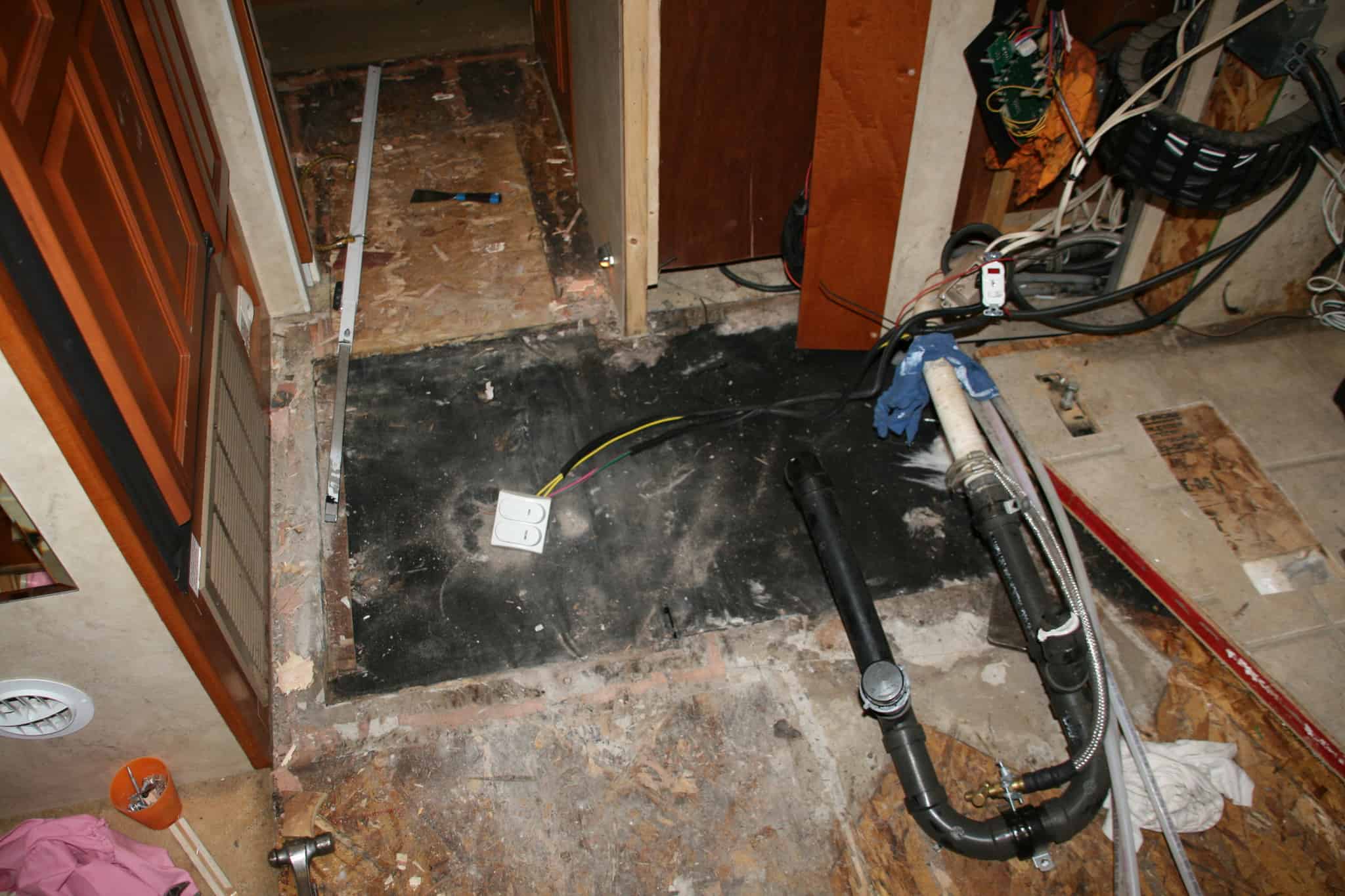
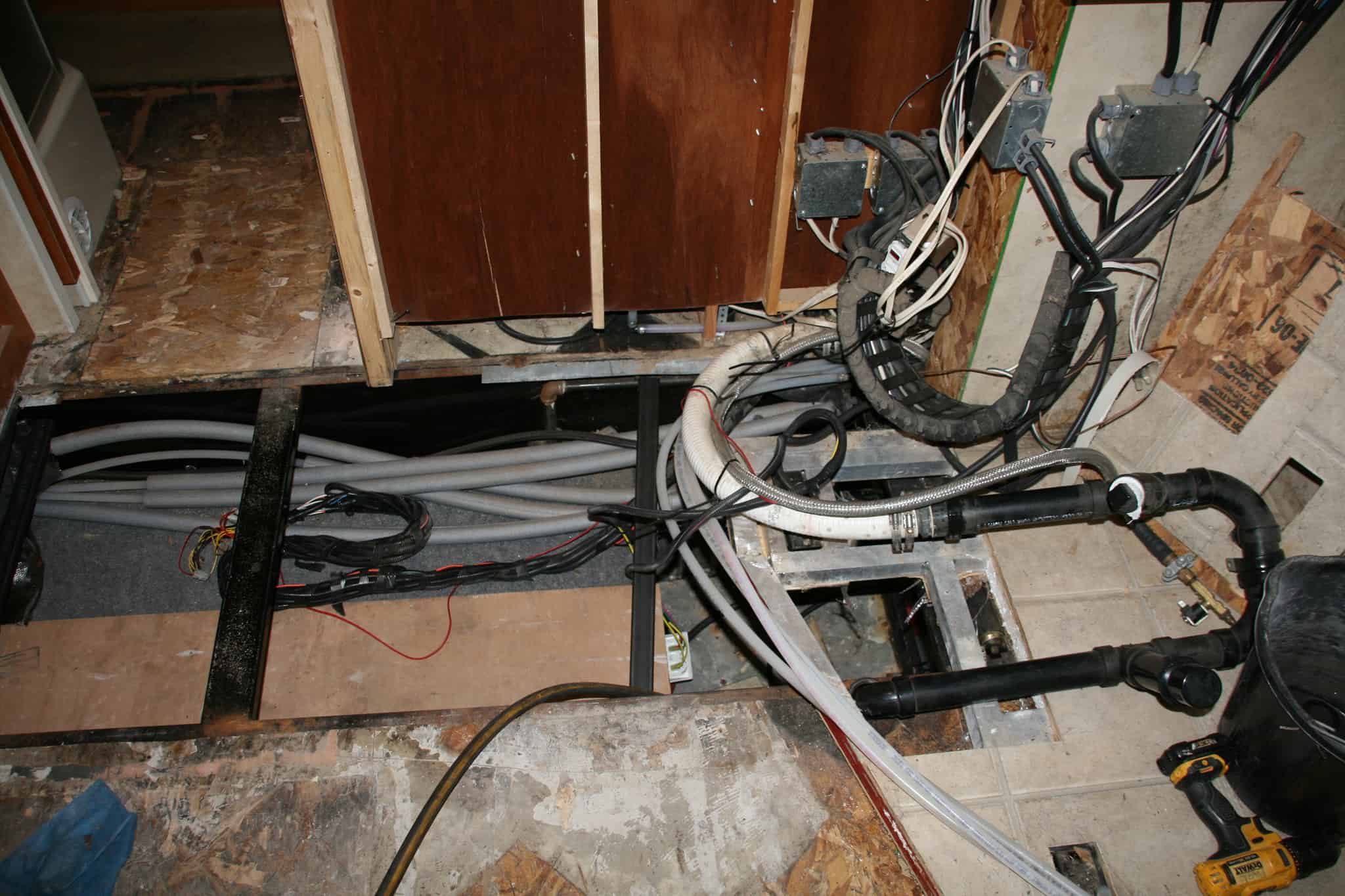

As you can see the floor has now been recovered and looks as good as new which is not really the point of this article. The point I am trying to make is that a lot of these things you have seen could have been prevented by having your vehicle serviced by a team that has the skills to repair what they find and not ignore it because it is too difficult to address.

